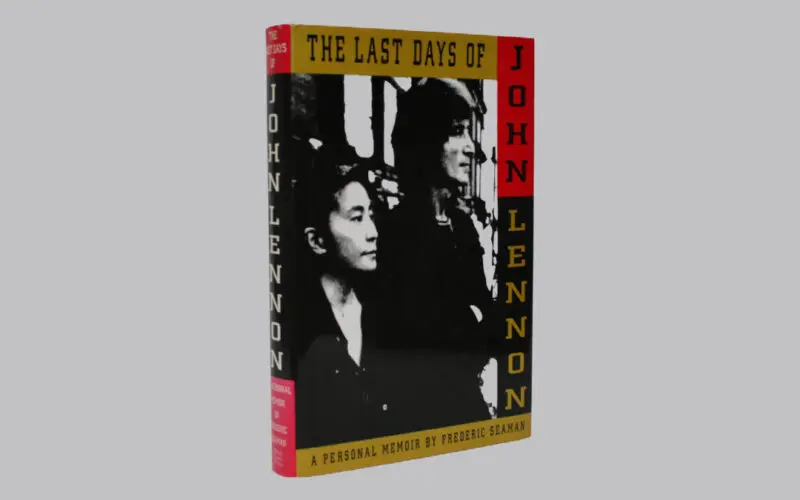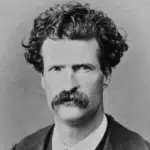Ono alleges infringement of 374 family photos she claims were stolen as part of an elaborate scheme to profit from John Lennon’s death. Does she have a case? And does Ono actually own the copyrights in the photos?
December 8, 2020 marks the 40-year anniversary of John Lennon’s death, which will likely lead to an increased wave of interest in Lennon’s life and legacy. In a new lawsuit filed on Thursday, Lennon’s widow Yoko Ono claims that the family’s ex-assistant Frederic Seaman is threatening to profit from Lennon’s death and violate a 2003 consent judgment which prevents him from talking about the family or publishing photos he took of Lennon during the star’s final years.
UPDATE—Yoko Ono and Frederic Seaman have reached an agreement to settle her copyright claim in exchange for Seaman’s silence on all things Lennon. Read here.
Ono’s Complaint
Ono’s lawsuit (read here), filed in federal court in the Southern District of New York, alleges that Seaman was hired as an employee of the Lennon household in February 1979. His duties included caring for the Lennons’ son Sean, running errands, and accompanying the family on their travels. Like the employees of many celebrities, Seaman signed a confidentiality agreement acknowledging that he would not publicize any information he obtained about the Lennon family in books or interviews.
“Project Walrus”
After Lennon was murdered on December 8, 1980, Seaman allegedly launched a scheme to exploit Lennon’s death by stealing personal items from the Lennon family, including Lennon’s personal diaries. Seaman apparently even gave his plot a code name, “Project Walrus,” presumably after the Beatles song “I am the Walrus.” I guess as far as code-named plans go, it’s a bit catchier than “Project Everybody’s Got Something To Hide Except Me And My Monkey.” Seaman’s criminal activities ultimately led to his indictment in 1983. He plead guilty to second-degree larceny for theft of Lennon’s journals and was sentenced to five years’ probation.
As part of a plea bargain agreement with the district attorney’s office, Seaman promised to return the Lennons’ property, and turned over several boxes of photographs and personal items to Yoko Ono.
“The Last Days of John Lennon”
However, in 1991, Seaman wrote a book, “The Last Days of John Lennon: A Personal Memoir,” in which he recounted memories of his time with Lennon and published several photos that he had taken of the Lennon family.
Above – Fred Seaman photo of Lennon family on Thanksgiving, 1979. John looks like the IT guy at a tech startup.
Seaman’s account of John Lennon’s last days wasn’t particularly flattering, certainly as far as Yoko Ono is concerned. Seaman portrays Lennon as depressed and virtually imprisoned at The Dakota, controlled by an overbearing Ono.
Ono’s 1999 Lawsuit and Consent Judgment
After learning of the book, as well as the fact that Seaman had sold Lennon memorabilia and retained numerous photographs (allegedly in violation of his plea agreement), Ono brought a lawsuit against Seaman in 1999.
Following several days of trial in 2002, Ono and Seaman entered into a consent judgment. Per the parties’ agreement, which was blessed by the court in 2003, Seaman was enjoined from reprinting “The Last Days of John Lennon” and from publishing hundreds of photos he had taken of the Lennon family. (Old copies of the book are still floating around the internet and sell for about $50).
Fred Seaman’s 2020 Interview
Yoko Ono thought that her dealings with Seaman had come to an end almost twenty years ago. But according to her new lawsuit, Seaman violated the consent judgment in September 2020 when he discussed his employment with the Lennon family and other prohibited topics in an internet interview.
During the interview (which was with what appears to a relatively obscure Australian outfit called “Plastic EP TV“), Seaman also stated that “at some point in the future I would like to revise [“The Last Days of John Lennon”] and publish a revised and expanded edition.” When Ono’s lawyer sent Seaman a demand letter to which he failed to respond, Ono filed suit for copyright infringement, breach of the consent judgment, and fraud.
Does Yoko Ono Have a Claim for Copyright Infringement?
Yoko Ono is no stranger to copyright infringement actions. In 2008, she brought suit against the producer of a documentary that featured fifteen seconds of the John Lennon song “Imagine.” That effort proved unsuccessful, with the court finding fair use. Does Ono have a copyright claim here?
Copyright Ownership of the Lennon Photos
The first question we need to ask is whether Ono owns the copyrights in the 374 Lennon family photos she claims were infringed. While her complaint is not entirely clear, it appears that these photos were all taken by Seaman. Under U.S. copyright law, the copyright in a photograph is usually owned by the person who took the photograph, not its subject. This is why a number of celebrities, including Jennifer Lopez, Katy Perry and Emily Ratajkowski have been recently sued for publishing photos of themselves on Instagram when they haven’t received permission from the photographers who took them. (If you’re interested in learning more about the legal implications of reposting photos on social media, check out my recent post on the topic.)
Perhaps anticipating this issue, Seaman’s consent judgment does speak to ownership of the photos, reciting that “[b]y this Judgment, it is hereby declared that the 374 Photographs and any other photograph taken by Frederic Seaman of any member of the Lennon Family…. are works-made-for-hire for the Lennons, and, accordingly, Mrs. Lennon, as successor to all joint interests of the Lennons, is the rightful owner of the copyrights therein.”

Works Made For Hire
Works made for hire are an exception to the general rule that the person who creates a work of authorship is deemed to be the author and owner of that work. Under the 1976 Copyright Act (which was in effect at the time Seaman took the Lennon family photos at issue), a work made for hire includes:
(1) a work prepared by an employee within the scope of his or her employment; or (2) a work specially ordered or commissioned [in one of nine enumerated categories] if the parties expressly agree in a written instrument signed by them that the work shall be considered a work made for hire.
17 U.S.C. § 101
Works Prepared By Employees
There doesn’t seem to be any dispute that Seaman was employed by the Lennons. The more interesting question is whether he was acting within the course and scope of employment when he took his photos. Ono’s complaint characterizes Seaman as basically a gofer who was employed to run errands for the Lennon family. If taking pictures of the family were part of his duties, then there’s a good chance that any on-the-job photos he took of the Lennon family were owned by his employers as a work made for hire. If, on the other hand, Seaman took the photos as a “family friend” during his off time (as he’s previously claimed), then he would own them. It strikes me as odd that a celebrity would employ an assistant for the purpose of taking random family snapshots, but obviously I wasn’t there and don’t know Seaman’s arrangement.
Specially Commissioned Works
The second circumstance that can give rise to a work made for hire is when the work is specially ordered or commissioned in a writing signed by both parties, so long as it falls within one of nine enumerated categories. These categories include a “contribution to a collective work, as a part of a motion picture or other audiovisual work, as a translation, as a supplementary work, as a compilation, as an instructional text, as a test, as answer material for a test, or as an atlas.”
Note that photographs are not included among the specific categories of works that can qualify as works made for hire, unless they can be shoehorned into one of the other categories, such as a contribution to a collective work. This isn’t likely with respect to the type of one-off photos that Seaman took of the Lennon family.
In addition, whether parties have a work for hire relationship is determined by the parties’ agreement in existence at the time the work is created, not an after-the-fact characterization of the parties’ relationship. For example, in Marvel Characters v. Simon, the Second Circuit held that the parties’ characterization of a comic artist’s contributions as a work made for hire in a settlement agreement years after the fact was not determinative of the nature of the work at the time of its creation.
In Ono’s case, Fred Seaman also signed an after-the-fact settlement agreement with Ono, but that agreement was entered as a consent judgment by the court in 2003. Generally, under New York law, a judgment on consent is conclusive and has the same effect on later proceedings as a judgment after trial. That said, I’m not aware that any court has ever decided whether a consent judgment that blesses an after-the-fact characterization of a work as “made for hire” is determinative of the work’s copyright status. Keep in mind that the validity of a consent judgment is governed by the laws of each particular state, while copyright is solely a creature of federal copyright law. To the extent the laws conflict, federal law would prevail.
Infringement
If Ono can demonstrate that she owns the copyrights in the photographs taken by Seaman, she’ll next need to prove that he infringed them. Here, Ono’s complaint is also less than clear. The only act of disclosure that she alleges to be in violation of Seaman’s consent judgment and injunction is his interview with the Plastic EP show. Ono claims that a photograph of Lennon in Bermuda was visible during this interview.
It’s not clear whether she’s referring to a photo of Lennon hanging on the wall behind Seaman (which is not particularly visible or identifiable) or a photo of the family on the back cover of Seaman’s book. But even if Seaman’s display of one of these images during the interview constituted a “reproduction” of that particular image, what about the other 373 photos? Seaman did mention during his interview that “at some point in the future” he’d like to reprint his book (which contains several of the the photos). However, this is a pretty vague statement of desire, not necessarily a statement of intent—and certainly not an actual act of infringement.
While the information Seaman disclosed in the interview may constitute a violation of his consent judgment—which no doubt carries legal consequences—it’s far from obvious that a valid claim for copyright infringement is one of them. And interestingly, Ono’s complaint only appears to seek a total of $150,000. This represents the maximum statutory damages available for an act of willful copyright infringement of one work. Theoretically, the separate infringement of 374 photos would carry maximum damages of over $56 million.
It will be interesting to see if Seaman is able to find a lawyer to test any of the issues I’ve raised. If he does, I’ll post an update. In the meantime, if you have thoughts on Yoko Ono’s latest lawsuit, let me know in the comments below on on the Copyright Lately social media accounts.
UPDATE—Yoko Ono and Frederic Seaman have reached an agreement to settle her copyright claim in exchange for Seaman’s silence on all things Lennon. Read here.







9 comments
This is thoughtful article. I just want to let you know that the lawsuit against Mr.Seaman that was concluded in 2002 was a farce all around. First of all, she did not sue Seaman when he published his book about Lennon, and she made no claim to the photographs he’d taken at that time. Whst inspired her to claim ownership of the photos later on was that she had put out a boxed set of Lennon’s songs with one of Fred’s photos on the cover. It was attributed to another person who had
worked for the Lennons previously. Fred was miffed at this and in need of money so he wrote a letter to the publisher complaining about the use of his photo. He had hoped the publisher would just pay him a five thousand dollars to make him go away. Instead, Yoko became enraged and sued him. Fred had no money for a decent lawyer and ended up with a hack who wasn’t getting much, if anything,, except a little publicity. He put up no fight and in the end, because of the fear that Yoko would get a large judgement against him he agreed to all of Yoko’s terms. The whole affair was demoralizing. It wasn’t a fair fight and Yoko has done that sort of thing before. She has proven once again with this new lawsuit just how vindictive she is. And to make things worse the press rehashes what happened in 1983 and distorts the truth about what Fred did and his motives for doing it. It’s all a hatchet job. Fred adored John Lennon and has been paying for his affection for the former Beatle for 37 years.
Very interesting. Thanks for sharing!
Hi Aaron,
If you get the history of the signed NDA, it was fraudulently obtained: when Fred started working as Lennon’s PA, no NDA was required. In fact, YO got his signature after he had stopped working for the Lennon’s (estimated 1982ish) via the mendacious Rob Rosen who in conjunction working with Fred’s shrink, got Fred to sign a document that Fred thought was for setting up access to a safe deposit box at a local bank. Rosen hid the document except for the signature field and rushed Fred into signing what he thought was a completely different document. This whole ‘project walrus’ was made up by Rosen in league with YO, Fred’s shrink and the equally awful Mintz who has been working forever as YO’s publicist and fixer. Fred was framed from the getgo, he never stole anything. He had an oral agreement with John that unfortunately was never written down.
YO sues like other people shake hands. She had the money to pay $350/hour lawyers vs a poor person who only had access to a public defender.
This is not as clear cut as one thinks. Also, YO seems to have gotten the blessing of various intell agencies in conquering JL and getting him to do almost anything she wanted him to, thus everyone is afraid to say anything negative about her or else.
Thank you for writing this article, however no one is discussing that Fred’s signature on the non-disclosure agreement was fraudulently by Rob Rosen long after Fred had resigned from working with the Lennon’s at the end of 1981. Rosen assured that a document he was signing was for a safe deposit box access. But Rosen lied and the form was a complete NDA agreement which has been the underpinning of YO’s lawsuit against Fred and her claims that any photos he took, she owns and that he is forbidden from saying anything about his work with the Lennons.
Fred never ever signed a confidentiality agreement in 1979. If he had signed, he would have had to get permission to publish photos in his book. It was only after the book was published that Yoko went after him, she has an obsession about owning the copyright of any photo taken of John Lennon.
She alleged Fred “stole” to discredit him for speaking out about what was going on with John, that he was virtually a prisoner at Dakota.
Where there is smoke there is fire, so she has harassed and targeted and surveiled Fred for decades.
John was bi-sexual so much of her pushing the doublefantasy version of her relationship with John, is to black out any other relationships with men/women that John had. Time will reveal that John was one of the most heavily blackmailed celebrities of all time in order to preserve the Beatles hetero/straight image and to hide that John was attracted to other men like David Bowie as documented on a new book by LesleyAnn Jones.
My guess is that as John appeared to be losing a lot of weight and looking more and more ill in nov/dec 1980, perhaps he was starting to suffer from AIDS which was all around him in NYC in late 70s, thus she had a vested interested in John getting shot sooner than later. Of course John Lennon would not be allowed to die from AIDS otherwise the world would then find out his relationship with Yoko was truly a fairy tale but she played the role of the wicked witch of the East.
Dear Mr. Moss:
I’ve enjoyed reading your posts on all things related to copyright and publishing. They are informative and humorous. Of particular interest is your recent post about Fred Seaman’s legal issues with Yoko Ono.
For the last four years, I’ve also spared with Ms. Ono over the publication of my memoir. (I worked for Lennon/Ono 1977-1982). I believe I’ve been targeted by a “Catch and Kill” scheme by Ms. Ono. Since 1916, two publishers have withdrawn their support for my work only based on a C/D letter. The current publisher, Diversion Books, has postponed the book’s publication indefinitely and has remained silent to my request to terminate our contract.
I look forward to hearing from you and getting your reactions.
Regards,
Michael Barbosa Medeiros
Hi Michael,
Thanks for your comment. While I unfortunately can’t give you legal advice on your particular matter through these comments, I’ve definitely seen situations in which book publishers will back down from publishing a particular work if they receive what they deem to be a credible claim for defamation or copyright infringement. And smaller publishers may think twice before coming out with a book upon receiving an objection from someone known to be litigious, even if the claim isn’t particularly strong. Self-publishing may be one way to proceed, but this still leaves you potentially vulnerable to a claim.
For what it’s worth, in Fred’s book he writes that when John sailed to Bermuda, Yoko moved his furniture to another apartment in the Dakota and planned to divorce him. His book paints a very unflattering portrait of Yoko Ono and this is the root oh her gripe with Fred Seaman, not so much photographs he may have taken. Yoko escaped John’s death smelling like a rose when the reality of it was John was heartbroken by Yoko’s faded love for him.
This is a lot of bull cookies! Let’s tear down Yoko and say Fred is the one who is the villain. He knew he’d be watched to do precisely what he did! The only one who was very hurt was Fred’s aunt, who was Sean’s nanny. She did nothing but she brought him in for employment. So, all around Fred Seaman caused a great deal of trouble!!!!